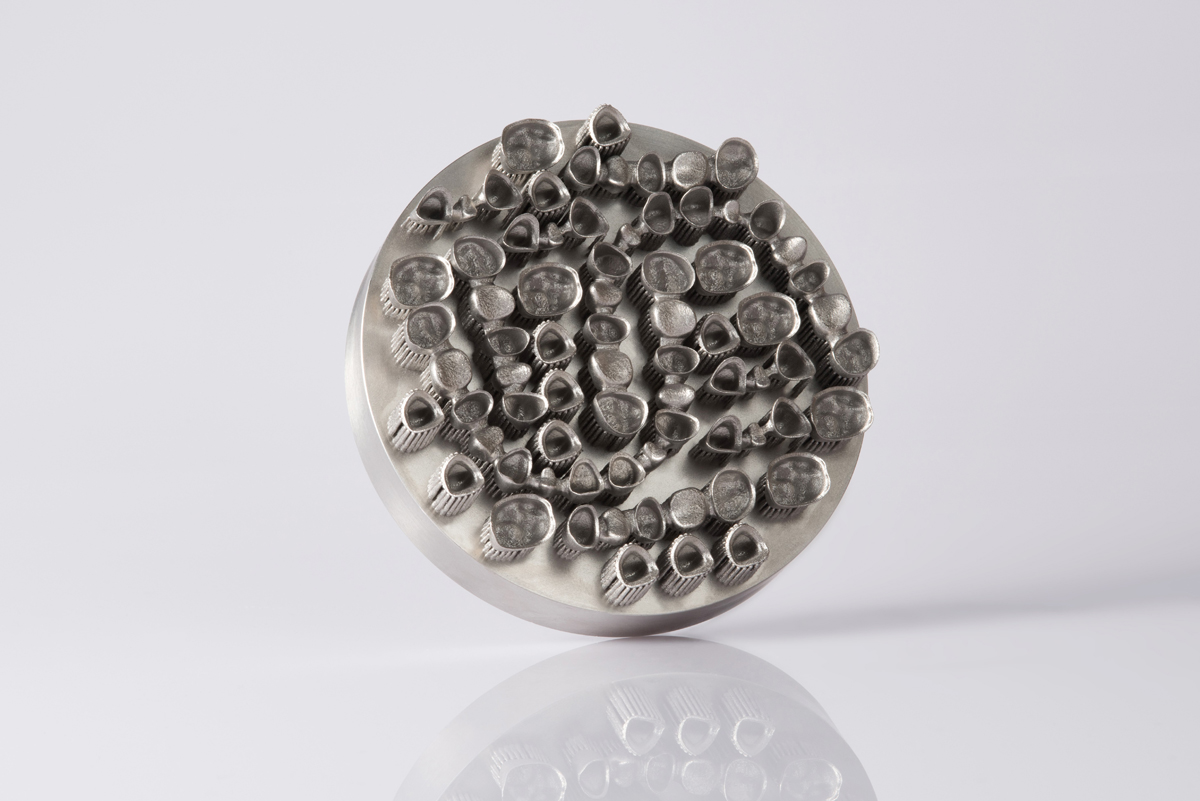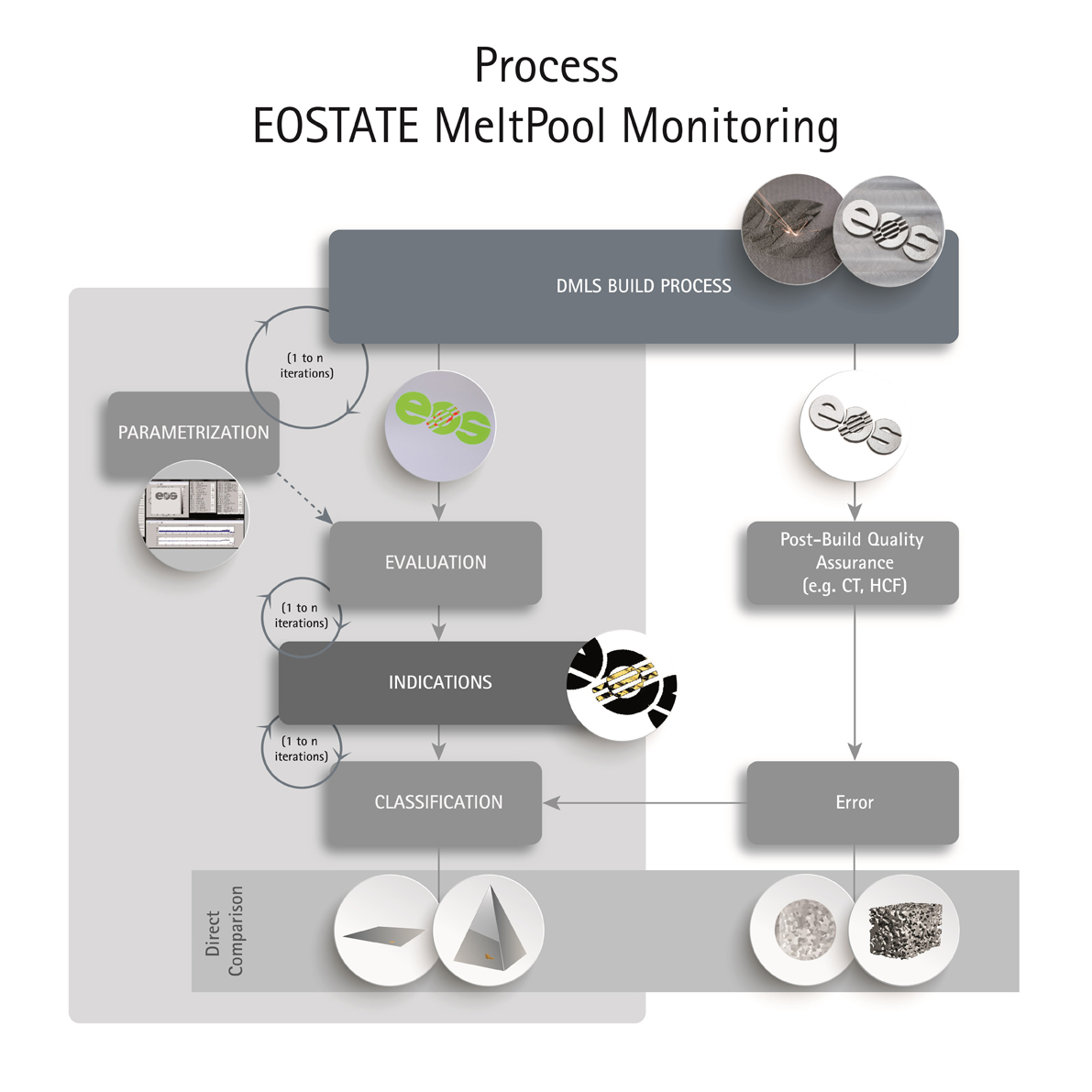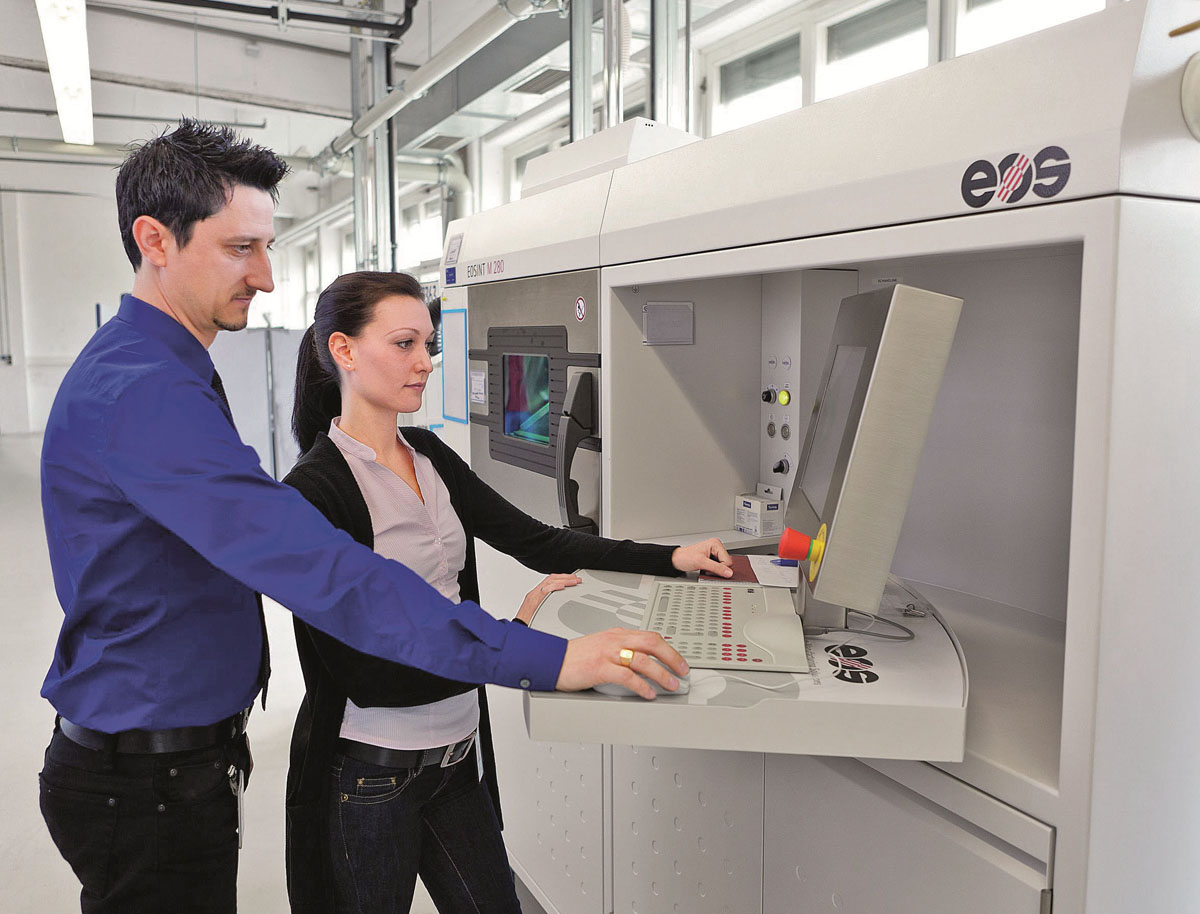This week, formnext makes its debut in Frankfurt, where a number of industrial manufacturers are making big announcements and debuts. Among them is EOS, which has brought its suite of industrial polymer SLS and metal DMLS machines, including new solutions that they believe will “[shape] the future of manufacturing”.
In addition to its existing portfolio of SLS systems, materials, consulting services, and monitoring and software solutions, EOS is unveiling a new metal 3D printer, the EOS M100, as well as a new material, EOS StainlessSteel CX, and a new quality control platform. The EOS M100 is meant to be similar to its EOS M 290 Direct Metal Laser Sintering (DMLS), but in a more compact form that provides an easy and cost-effective entry into metal 3D printing. The new system has a round build platform of 100 mm in diameter, ideal for small production runs. Dr. Adrian Keppler, Chief Marketing Officer (CMO) at EOS, elaborates, “For example, the system can produce approximately seventy dental crowns and bridges in three hours.” To start, the EOS M100 will be capable of printing in EOS CobaltChrome SP2 (CE-certified, CE 0537) and EOS StainlessSteel 316L, but the machine will also be print in EOS Titanium Ti64, which is still in the development stage.
Other features include the system’s 200 Watt fiber laser, which EOS claims ensures optimum print conditions, such as high beam quality and stability, for greater repeatability. The smaller laser spot, they suggest, also increases detail resolution for more complex and delicate components. They’ve also included a recoating and exposure strategy for improved efficiency that is complemented by the system’s modular interior for quick set up and dismantling.
Interestingly, a new quality control mechanism has been introduced to the technology in order to bring new standards of repeatability and quality to metal 3D printing. The company’s new EOSTATE MeltPool Monitoring allows for automated, real-time monitoring of a metal print, at every melting point, layer, and component. This solution is also being presented as an add-on solution for the EOS M 290 DMLS system. EOSTATE MeltPool functions by relying on two photodiodes located on- and off-axis, in addition to a camera adapter, a specialized signal amplifier, and spectral filters to separate process light from reflected laser light. Altogether, this allows the system to monitor light emitted by the metal’s melt pool, while the software corrects data errors automatically, while also providing real-time visualization and evaluation, all of which can be used for data analysis.
The firm’s new EOS StainlessSteel CX has been designed as an extremely corrosion-resistant stainless steel with “maximum stability and excellent hardness.” The material is billed as easy to machine and polish, as well as resistant to corrosive plastics and diluted acids, reducing tool wear and maintenance. With the tooling and medical device industries in mind, EOS suggests that EOS StainlessSteel CX is suited for making injection molds, as well as metal products.
While a number of 3D printing companies, particularly 3D Systems and Stratasys, have been suffering on the stock market, EOS has proven that this trend is not representative of the industry as a whole. The German firm has increased sales revenues by 53% over the previous year, to EUR 263 million, and has said that it exceeded all sales targets, with the North American branch delivering the highest result at over $100 million (USD) in sales revenues. Additionally, their workforce has increased by 38% to 750 employees globally. The firm has even had to start building a new facility at its headquarters in Krailing, as their technology and customers centers are reaching capacity.
Chief Marketing Officer for EOS Dr. Adrian Keppler had this to say about their great year and new systems, “Our company has been pursuing an unparalleled course of growth and success for many years. By October, there were approximately 2,000 EOS systems installed around the world. We were able to double our installed base over the last three years; during the last two years, the number of metal laser sintering systems was doubled from 400 to 800 systems. During the past business year alone, the company sold 400 systems, including 220 metal systems. This underlines EOS’ leadership role particularly in the metal segment, and the growing interest in this technology particularly in the series production segment.” He adds, “We expect that market demand will continue to rise in the future – not least because leading companies worldwide trust in our technology.”
Though the new releases from EOS may not be as numerous as in previous years, all of this information signifies the fact that they are still strong contenders amid the overall growth in the industry. This particularly important in the face of the expiration of SLS patents and the subsequent entry of other businesses into the SLS industry: a few entry-level SLS manufacturers, and industrial manufacturers like Prodways/Farsoon, Ricoh, and Sentrol. As these businesses look to take advantage of the SLS market, EOS is demonstrating that it is responding to demands by the mainstream supply chain for improved quality control and repeatability in metal 3D printing, while also increasing the number of systems and materials they offer. Their sales revenue also proves that, in the face of the hype bubble burst, they can survive by not over-promising and over-marketing, as at least one other manufacturer has done, namely EOS’ largest competitor, 3D Systems.







